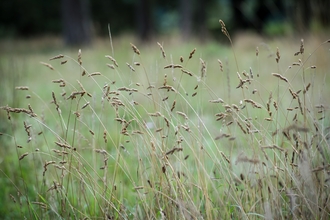
Wasp Spider ©Adam Cormack
Wasp spider
The wasp spider is a great mimic - looking just like a common wasp keeps it safe from predators, even though it is not dangerous itself. It can be found in southern England, but is spreading north.
Scientific name
Argiope bruennichiWhen to see
April to OctoberSpecies information
Category
Statistics
Body length: 0.5-1.8cmAbout
The wasp spider is a very large, colourful spider that is a recent arrival in the UK from the continent and has slowly spread over the south of England. It builds large orb webs in grassland and heathland, and attaches its silk egg-sacs to the grasses. The web has a wide, white zig-zag strip running down the middle, known as a 'stabilimentum', the function of which is unclear.Mating is a dangerous game for males; they wait at the edge of the web until the female has moulted into a mature form, then take advantage of her jaws being soft and rush in to mate. However, many males still get eaten during this time.
How to identify
The female wasp spider has yellow, black and white stripes, just like a common wasp. Its legs are also stripy. The male is smaller and pale brown.Distribution
Found in Southern England and spreading northwards.Did you know?
Spiders use venom to immobilise and kill their prey. Unfortunately for humans, that venom is sometimes dangerous for us too: the black widow, redback, brown recluse and Brazilian wandering spiders are all notorious for biting humans and causing injury or death. However, most spiders are not aggressive and prefer to avoid large prey, or only bite in self-defence.There are no deadly spiders living in the UK (although some do turn up in shipments of fruit from time to time), and our most venomous species is the false widow - a new arrival in the south, probably as a result of climate change. This species can cause a painful bite and flu-like symptoms.
How people can help
The Wildlife Trusts record and monitor our local wildlife to understand the effects of various factors on their populations, such as the introduction of new species.You can help with this vital monitoring work by becoming a volunteer - you'll not only help local wildlife, but learn new skills and make new friends along the way.



